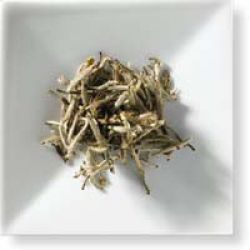
Both black, green tea and white teas originate from the same plant, the Camellia sinensis. However, the final product differs in style, taste and caffeine content due to differences in processing. Green teas are not fermented or fully oxidized like black teas, but instead steamed or pan fired. White teas consisting only of young buds, are withered and immediately dried in the sun or by steam. Like black and green teas, white tea contains an abundant source of natural plant-derived antioxidant compounds called polyphenols. Included within the broad antioxidant polyphenol class are flavonoids and catechins. A kind of flavonoid, catechins are found in tea leaves and may provide protective antioxidant action against harmful free radicals. Research shows that these free radicals cause heart disease, some kinds of cancer and increase the risk of strokes. Drinking white tea with its high antioxidant levels help protect the body by combatting dangerous free radical activity. Further health benefits of white tea may include lowering cholesterol, strengthening the immune system, promoting healthy blood vessel functionality and even protecting teeth and bones. In addition, white tea provides a source of nutrients including magnesium. managanese, potassium, calcium, and the vitamins C and K all in trace amounts. White teas contain the least amount of caffeine of all teas, generally ranging in the cup from 5-15 milligrams.




